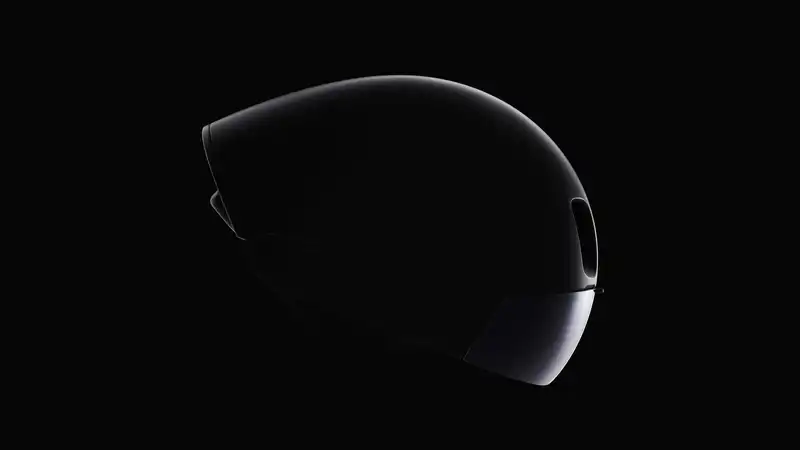Helmets with built-in visors are not new technology, but since the 2017 Giro Air Attack, no brand has tried to fill this particular niche by limiting visors to track or time trial use.
Recently, however, road helmet visors seem to be undergoing something of a renaissance. Oakley recently released the ARO7 road helmet with a Prizm Road magnetic visor, and POC is following suit with its new Procen Air, released today.
It's no big secret, as we've seen them used early in the season, including the Tour Down Under, but here are some juicy details about the helmet that have divided opinion in the office and in the comments section.
You don't have to be a wealthy cycling technical journalist to know that this helmet comes from the experience established in POC's time trial and Pursuit helmets. The truncated teardrop shape means that the leading edge has all the aerodynamic efficiency of a TT lid without violating the UCI's onerous rules regarding maximum helmet length.
The sleek form, especially with the integrated visor, is clearly intended to be a windsheet, but strangely enough, the three vents on the front are said to make the whole package faster. Especially on the full aero tuck, they fit right into the high-pressure zone as they are located at the leading edge of the cyclist's frontal area, and according to POC, the additional vents have the added benefit of draining the high-pressure zone, making the entire helmet faster, while also aiding in cooling. The truncated rear end creates a low-pressure zone, further increasing airflow and improving efficiency.
Naturally, the clear visual focus on speed may mean that consumers may not see it as a viable option in general use, but if the wattage claims are to be believed, there will be significant gains. the POC has been used at speeds ranging from 30 km/h to 60 km/h At race speeds, Procen Air claims to be 18 watts more aerodynamic than the company's all-rounder model, the Ventral.
Fortunately, we were able to obtain both helmets and access to the wind tunnel.
It is one thing to manufacture a time trial helmet, but on the road in a group of riders, the compromises to both sound and visibility are far less acceptable than when a solo rider is racing against the clock.
The ear flaps, similar to those seen on unreleased Kask helmets even earlier in the season, are not just there to keep fresh air away from disturbed ears. By partially blocking the ears with the flap, wind noise is said to be dramatically reduced, which in turn improves the rider's ability to hear while riding at maximum pace.
Like the Oakley ARO7, the Prosen Air's visor is removable, secured with magnets, and can be stored in a second magnet. In this case, the magnetic visor garage is located at the rear of the helmet and is stored out of the wind. Clear lenses are included, and the main lens is the clarity lens used in the brand's sunglasses.
Curiously, it seems to buck the trend of POC's recent helmet releases by not featuring the MIPS system.
It is available in three sizes, covering head sizes from 50 cm to 61 cm, and unless you are an EF rider, the only color options are white and black, which will cost you €400/£360/$400 to purchase. Weight is 350 g for size M.


Comments